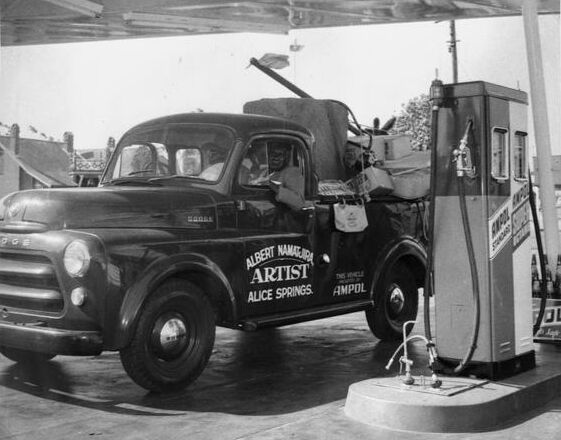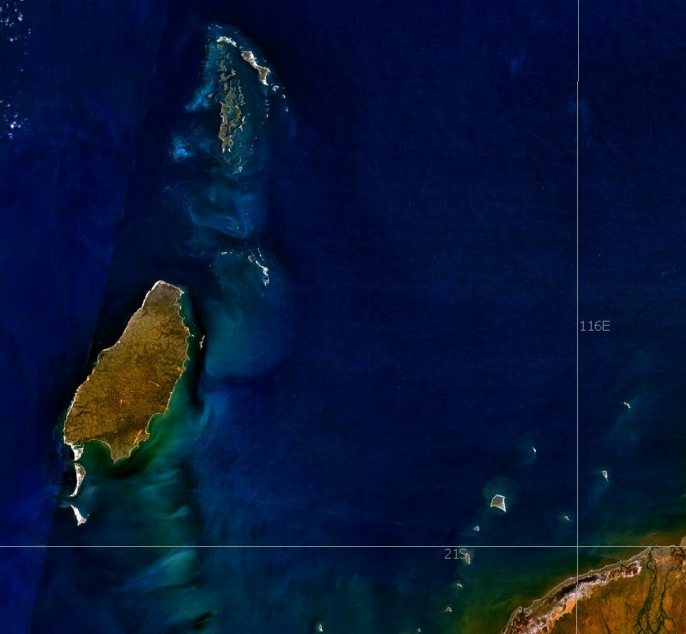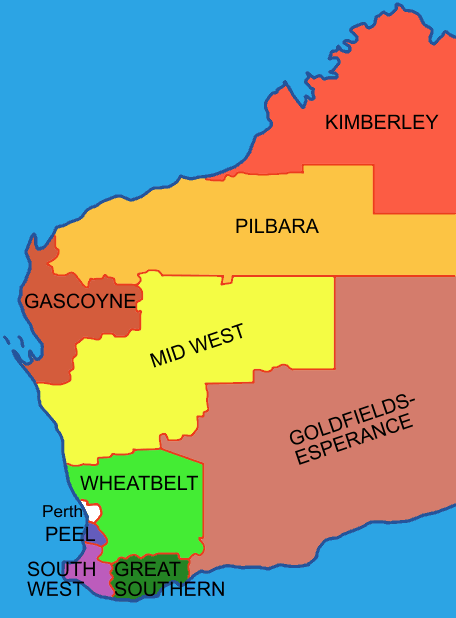|
WAPET
West Australian Petroleum Pty Ltd (WAPET) was a pioneer oil and gas exploration and processing company in Western Australia. History Formed in March 1952 as a joint venture between Caltex and Ampol, the company discovered Australia's first flowing oil in November the following year, at Rough Range on the North West Cape. The first oil discovery in Australia was made near Lakes Entrance, Victoria in 1924. The Rough Range well flowed with heavy crude oil, initially at per day from a depth of 1099 metres, but further drilling in 1954 demonstrated the discovery to be small with low flow rates and it was deemed to be not commercial. Dongara In 1964 WAPET discovered the first commercial natural gas field in the state, at Dongara in the Perth Basin. The Dongara field is now wholly owned by Arc Energy and has produced of LNG to August 2007. The Dongara discovery resulted in the construction of the first gas pipeline in Western Australia, from Dongara to Pinjarra in 1971 by a WA ... [...More Info...] [...Related Items...] OR: [Wikipedia] [Google] [Baidu] |
Gorgon Gas Project
The Gorgon gas project is a multi-decade natural gas project in Western Australia, involving the development of the Greater Gorgon gas fields, subsea gas-gathering infrastructure, and a liquefied natural gas (LNG) plant on Barrow Island. The project also includes a domestic gas component. Construction was completed in 2017. Location 'Greater Gorgon' refers to a grouping of several gas fields, including Gorgon, Chandon, Geryon, Orthrus, Maenad, Eurytion, Urania, Chrysaor, Dionysus, Jansz/Io, and West Tryal Rocks, situated in the Barrow sub-basin of the Carnarvon Basin. The Gorgon field is centered about off the north-west coast of Western Australia, where the water depth is approximately . Other fields in the group lie to the north, such as Jansz-Io, which covers an area of , in a water depth of . Barrow Island lies off the Pilbara coast, north-north-east of Onslow and west of Karratha. The largest of a group of islands which include the Montebello and Lowendal Islands, it ... [...More Info...] [...Related Items...] OR: [Wikipedia] [Google] [Baidu] |
Ampol
Ampol Limited is an Australian petroleum company headquartered in Sydney, New South Wales. Ampol is the largest transport energy distributor and retailer in Australia, with more than 1,900 Ampol-branded stations across the country . It also operates in New Zealand through its subsidiary Z Energy. Ampol was first incorporated in 1936 and would later be owned by Pioneer International. The Caltex brand in Australia separately began in 1941 to market petrol in its chain of service stations and was owned by Caltex Australia Limited. In 1995, the Ampol and Caltex operations merged to form Australian Petroleum, equally owned by Pioneer and Caltex Australia. Pioneer sold its shareholding between 1997 and 1998, and Caltex Australia gained full ownership of Australian Petroleum. Caltex Australia then gradually replaced the Ampol brand with Caltex over the next decade. From 2001 until 2015, Caltex Australia was owned equally by American petroleum company Chevron Corporation and the Aus ... [...More Info...] [...Related Items...] OR: [Wikipedia] [Google] [Baidu] |
Barrow Island (Western Australia)
Barrow Island is a island northwest off the Pilbara coast of Western Australia. The island is the second largest in Western Australia after Dirk Hartog Island. Early history and European discovery The island was visited by Indigenous Australians approximately 4,000 or more years ago. It separated from the mainland approximately 6,800 years ago. Stone artefacts including several weathered flakes and fragments made of igneous and metamorphic rocks and chert were collected from Barrow Island in the 1960s. Thevenard Island also has evidence of Aboriginal visitation, and it is likely that the nearby Montebello Islands were utilized as well; however, there have been no archaeological finds from these islands. Navigators had noted its existence since the early 17th century, and Nicholas Baudin sighted it in 1803, mistakenly believing it to be part of mainland Australia. Phillip Parker King named the island in 1816 after Sir John Barrow, a Secretary of the Admiralty and founder of t ... [...More Info...] [...Related Items...] OR: [Wikipedia] [Google] [Baidu] |
Rough Range
Rough Range is a location in Western Australia where oil was discovered during an exploration drilling programme in 1953. West Australian Petroleum (WAPET) drilled its first well at Rough Range near North West Cape North West Cape is a peninsula in the north-west of Western Australia. Cape Range runs down the spine of the peninsula and Ningaloo Reef runs along the western edge. It is in the Gascoyne region and includes the town of Exmouth. History In 1618, ... in 1953. This well produced at a rate of , and was the first working well of Australia's commercial petroleum industry. Despite being abandoned as non-commercial in the mid 1950s, consideration was given in the 2000s to re-work the find. Notes {{reflist, 30em Petroleum industry in Western Australia North West Western Australia ... [...More Info...] [...Related Items...] OR: [Wikipedia] [Google] [Baidu] |
North West Cape
North West Cape is a peninsula in the north-west of Western Australia. Cape Range runs down the spine of the peninsula and Ningaloo Reef runs along the western edge. It is in the Gascoyne region and includes the town of Exmouth. History In 1618, Dutch East India Company captain Lenaert Jacobszoon and supercargo Willem Janszoon of the ''Mauritius'' landed in the area. Phillip Parker King later visited in 1818 and named it ''North West Cape'' as well as naming Exmouth Gulf after senior naval officer Edward Pellew, 1st Viscount Exmouth. Later, pearl luggers visited the area from Broome. During World War II a military operation codenamed ''Operation Potshot'' was done in the area. The first oil flow in Australia was discovered there in 1953 at Rough Range, by exploration company WAPET. Exmouth Gulf Station takes up much of the eastern side of the peninsula backing onto Exmouth Gulf. See also * Exmouth, Western Australia * Cape Range National Park * United States Naval Communica ... [...More Info...] [...Related Items...] OR: [Wikipedia] [Google] [Baidu] |
Energy In Western Australia
Western Australia, like other Australian states and high-income countries, is a heavy energy user by global standards. The most distinctive features of Western Australia's energy systems are the massive export of natural gas, its independence from the interconnected cross-state gas and electricity networks in eastern Australia, and the presence of two separate large-scale grids and many microgrids to provide power for the sparsely populated state. Natural Gas Western Australia is the source of over 60% of Australia's natural gas, and over 80% of this production is exported as liquified natural gas. The vast majority of production is from offshore wells off the north-western coast of the state. Domestic gas is piped to industry in the Pilbara and the major population centres in the south-west. There is, however, no pipeline connecting Western Australia's gas network to the eastern states of Australia. Western Australia has a domestic gas reservation policy that requires g ... [...More Info...] [...Related Items...] OR: [Wikipedia] [Google] [Baidu] |
Companies Based In Perth, Western Australia
A company, abbreviated as co., is a legal entity representing an association of people, whether natural, legal or a mixture of both, with a specific objective. Company members share a common purpose and unite to achieve specific, declared goals. Companies take various forms, such as: * voluntary associations, which may include nonprofit organizations * business entities, whose aim is generating profit * financial entities and banks * programs or educational institutions A company can be created as a legal person so that the company itself has limited liability as members perform or fail to discharge their duty according to the publicly declared incorporation, or published policy. When a company closes, it may need to be liquidated to avoid further legal obligations. Companies may associate and collectively register themselves as new companies; the resulting entities are often known as corporate groups. Meanings and definitions A company can be defined as an "artificial per ... [...More Info...] [...Related Items...] OR: [Wikipedia] [Google] [Baidu] |
Neptune Oil Company
Neptune Oil Company was an Australian independent petroleum company based in Melbourne, Victoria. The company was established in 1909 as a privately owned company. The company was taken over by the Shell Oil company in 1975. Distribution In the Australian states, the usual practice was for storage and transport from the local main port, for distribution through the state, with the head offices in the capital city. In many cases petrol stations with Neptune products were also dealing in second hand cars or other services. A "King Neptune" statue at a Neptune (later Shell) service station was a landmark in the Adelaide suburb of Darlington Darlington is a market town in the Borough of Darlington, County Durham, England. The River Skerne flows through the town; it is a tributary of the River Tees. The Tees itself flows south of the town. In the 19th century, Darlington underwen ... until 1991. The King Neptune statue now resides at Wills street Birkenhead,inside the gat ... [...More Info...] [...Related Items...] OR: [Wikipedia] [Google] [Baidu] |
Golden Fleece Company
Golden Fleece was an Australian brand of petroleum products and service stations operated by Harold Sleigh and Company. A partnership was founded in Melbourne, Australia in 1893 by shipowner and merchant Harold Crofton Sleigh (1867–1933) and manufacturer and shipowner John McIlwraith (1828–1902). In 1913 the company took delivery of its first consignment of motor spirit from the United States and marketed it in Australia as "Golden Fleece". Initially, motor spirit was sold in drums only—the first Golden Fleece pump being installed in 1920. Golden Fleece was a pioneer of single-branded service stations (as opposed to the more common multi-brand offerings of the era), and its distinctive "golden merino" trademark was soon a common sight for Australian motorists. The post-war era saw a massive expansion of Australia's motor industry and car ownership soared. The company was made public in 1947. These were boom times for Golden Fleece and expansion and acquisitions were th ... [...More Info...] [...Related Items...] OR: [Wikipedia] [Google] [Baidu] |
Commonwealth Oil Refineries
Commonwealth Oil Refineries (COR) was an Australian oil company that operated between 1920 and 1952 as a joint venture of the Australian government and the Anglo-Persian Oil Company. Early history The partnership was established in 1920 on the initiative of prime minister Billy Hughes. The board was to consist of seven members, three representing the Commonwealth and four representing the Anglo-Persian Oil Company. The provisional board consisted of: Sir Robert Garran, M. C. Lockyer, and Robert Gibson for the Commonwealth, and F. H. Bathurst, Professor Payne, T. J. Greenway, and W. J. Windeyer for the oil company. Greenway served as chairman for the first year. In 1922, the company purchased the disused shale oil refinery at Hamilton, that had been operated by British Australian Oil Company, and relocated equipment from there for use in its new refinery in Victoria. In 1924 it opened Australia's first oil refinery that processed imported crude oil, near Laverton, Victori ... [...More Info...] [...Related Items...] OR: [Wikipedia] [Google] [Baidu] |
Chevron Corporation
Chevron Corporation is an American multinational energy corporation. The second-largest direct descendant of Standard Oil, and originally known as the Standard Oil Company of California (shortened to Socal or CalSo), it is headquartered in San Ramon, California, and active in more than 180 countries. Chevron is engaged in every aspect of the oil and natural gas industries, including hydrocarbon exploration and production; refining, marketing and transport; chemicals manufacturing and sales; and power generation. Chevron traces its history back to the 1870s. The company grew quickly after the breakup of Standard Oil by acquiring companies and partnering with others, especially Texaco. Socal was one of the Seven Sisters that dominated the global petroleum industry from the mid-1940s to the 1970s. In 1985, Socal merged with the Pittsburgh-based Gulf Oil and rebranded as Chevron; the newly-merged company later merged with Texaco in 2001. Today, Chevron manufactures and sells fu ... [...More Info...] [...Related Items...] OR: [Wikipedia] [Google] [Baidu] |
Carnarvon Basin
The Carnarvon Basin is a geological basin located in the north west of Western Australia which extends from the Dampier Archipelago to the Murchison bioregion, and is the main geological feature that makes up the North West Shelf. The onshore part of the Carnarvon Basin covers about 115,000 km2 and the offshore part covers approximately 535,000 km2 with water depths up to 3,500 metres. It is separated into two major areas - the Northern Carnarvon Basin, and the Southern Carnarvon Basin. Northern Carnarvon Basin The Northern Carnarvon Basin includes the Exmouth Plateau, Wombat Plateau (on the northern part of the Exmouth Plateau), Investigator Sub-basin, Rankin Platform, Exmouth Sub-basin, Barrow Sub-basin, Dampier Sub-basin, Beagle Sub-basin, Enderby Terrace, Peedamullah Shelf and the Lambert Shelf. [...More Info...] [...Related Items...] OR: [Wikipedia] [Google] [Baidu] |





